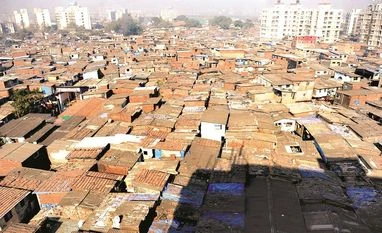The Dharavi Redevelopment Project is expected to reshape the real estate market in its vicinity, with industry leaders banking on its strategic location and improved connectivity to drive transformation. Dharavi, located in central Mumbai and adjacent to the Bandra-Kurla Complex (BKC), boasts proximity to key upcoming infrastructure such as Metro lines and a bullet train station, besides major road networks.
“Dharavi, being a 590-acre land parcel in central Mumbai, has so far restricted developers from undertaking projects around it due to its usage and perception,” said Jayesh Rathod, co-founder and director of The Guardians Real Estate Advisory, a Mumbai-headquartered firm with its offices in Dubai and Pune. He added that projects in the area had previously faced tepid responses, but this is expected to change with the redevelopment.
Situated near BKC, India’s costliest central business district, and surrounded by luxury residences and malls, Dharavi’s redevelopment has sparked interest among Mumbai’s real estate developers. Dhaval Ajmera, director of Ajmera Realty and Infra, noted that developers are already looking to accelerate projects in the area for an early completion in a bid to gain a competitive edge.
Dominic Romell -- president of the Confederation of Real Estate Developers’ Associations of India-Maharashtra Chamber of Housing Industry (CREDAI-MCHI) and director of Romell Group, an over two-decades old Mumbai-based real estate developer -- said the project is being closely monitored by the real estate community. Similarly, Rahul Thomas, director at Suraj Estate Developers, confirmed his firm is tracking developments in Dharavi.
Experts believe Dharavi’s location and connectivity could position its vicinity as a hotspot for mixed-use developments. Gulam Zia, senior executive director at Knight Frank India, suggested that “project authorities may keep the real estate closer to BKC to create a contiguity”. Amit Jain, chairman and managing director of Arkade Developers, highlighted the lack of available land in central Mumbai and rising property prices in traditional markets as key drivers for demand in the area.
While current demand remains moderate, Rathod noted that the “full benefits of redevelopment are yet to materialise”. Infrastructure projects like the recently commissioned Mumbai Metro Line 3 and upcoming metro lines connecting Dharavi to the western suburbs are expected to enhance property values. Additionally, its proximity to the Western Express Highway, Eastern Expressway, and the Worli Sea Link — part of the Coastal Road linking Navi Mumbai’s new airport — further strengthens its appeal.
Developers see Dharavi’s vicinity as suitable for both luxury and mid-end projects. However, affordable housing may be less viable due to high land costs.
Zia observed that redevelopment in neighbouring areas like Mahim, Sion, Kurla, and Bandra is setting a precedent, with major players such as Adani, Prestige, and L&T spearheading projects. “If these areas are opening up, a continuity of whatever is happening in the surrounding areas will happen in the vicinity of Dharavi, as well.”
Vijay Agrawal, managing director of investment banking at Equirus, highlighted a trend of consolidation in real estate sales to larger, established developers.
Post-redevelopment, Dharavi’s commercial properties could command rental rates of ~200 to ~500 per square foot, potentially rivalling BKC. According to Knight Frank, residential prices in nearby markets, currently in the ~50,000-60,000 per square foot range, and fall under the luxury and premium segments.
The project’s progress could turn Dharavi into a hub for mixed-use developments, integrating residential, commercial, and retail spaces. Rathod predicted strong performance in commercial and retail segments, while Agrawal suggested a potential moderation in rental price growth due to increased supply. “The supply in Dharavi’s vicinity will probably impact the rental growth. But it may not reduce,” Agrawal added.
Siddharth Moorthy, managing director, Vascon Engineers, believes that price is a function of supply and demand. “But I feel in places around Dharavi, prices will hold because of the location and connectivity, as well as the potential in these areas,” he stated.
Despite optimism, challenges remain. Aligning infrastructure to accommodate increased population and traffic, securing regulatory clearances, and balancing rising property values with affordability and inclusivity are critical issues. Additionally, uncertainty over project timelines and legal disputes pose risks.
The long-standing plan of redeveloping Dharavi is being executed by Navbharat Mega Developers Private Limited (NMDPL), an entity backed by the Adani group and the Government of Maharashtra’s Dharavi Redevelopment Authority (DRA)/Slum Redevelopment Authority (SRA).
The project has been a battleground for political parties, and a lot depends on how soon the project becomes acceptable to people and businesses residing in the slums of Dharavi. Last month, the Bombay High Court dismissed a writ petition filed by SecLink Technologies Corporation (STC), a UAE-based construction and real estate firm, challenging the project award. Adani Properties Private Limited (APPL) was declared as the preferred bidder in November 2022 by the state authorities. If SecLink moves the Supreme Court, it may possibly lead to delay in the project’s execution.
Allegations of land grabbing, transparency concerns, and the daunting task of rehabilitating thousands of residents and small businesses add to the complexity.










)

